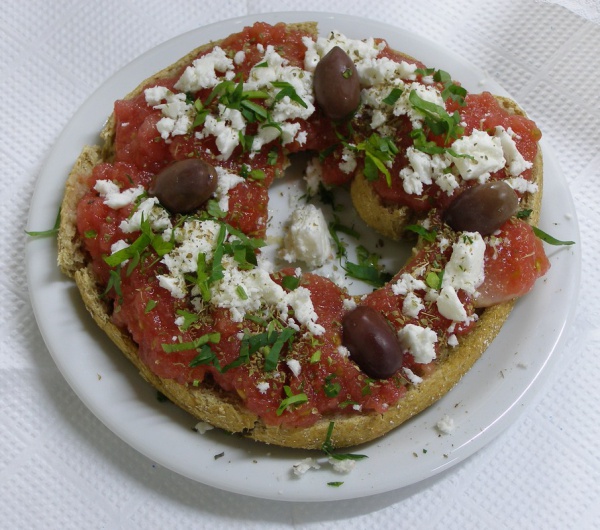Facts About Cretan cuisine
Cretan cuisine, originating from the enchanting Mediterranean island of Crete, is renowned for its emphasis on natural, seasonal, and minimally processed ingredients. Until the 1960s, the diet primarily consisted of fresh and dried fruits, legumes, wild herbs, aromatic plants, and whole grains. Dairy products, poultry, fish, and red meat were consumed in moderation, with olive oil serving as the main source of fat. Red wine was the preferred beverage, and desserts typically featured yogurt, fresh fruits, and honey-based pastries.
Cretan cuisine boasts a delightful array of appetizers, including:
- Dakos Salad: A refreshing combination of tomatoes, olives, and Cretan barley rusks.
- Kalitsounia: Small pastries filled with cheese or greens.
- Kolokythoanthoi: Stuffed zucchini flowers.
- Kolokythopita: Zucchini pie.
- Marathopita: Fennel pie.
- Melintzanopita: Eggplant pie.
- Mizithropita: Cheese pie made with Mizithra cheese.
- Paximadi: Cretan barley rusks.
- Xynomizithra, Xygalo, and Amarino Cheeses: Distinctive local cheeses.
- Seliano Cheese: Another local favorite.
The island's specialties are equally enticing and include:
- Apáki: Smoked pork or chicken.
- Blessed Thistle with Lamb: A distinctive lamb dish.
- Chirino me Selino: Pork with celery.
- Gamopilafo: Traditional wedding rice dish.
- Snails with Tomato: A flavorful snail dish.
- Sfougato: A type of Cretan omelet.
- Sofegada: A hearty stew.
- Triftoudia: A variety of orzo pasta.
- Various pastas such as Skioufichta, Magiri, Chilofta, and Avgochilos.
For those with a sweet tooth, Cretan desserts offer exceptional tastes:
- Amygdalopita: Almond cake.
- Patouda: A sweet pastry.
- Portokalopita: Orange pie.
Cretan cuisine invites you on a delicious journey through traditional Mediterranean flavors, celebrating simplicity and the island’s abundant natural bounty.

 Albania
Albania